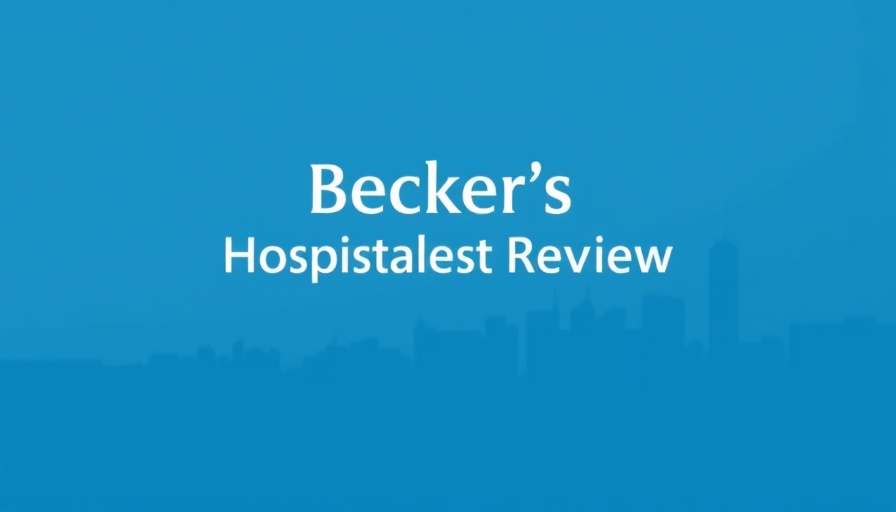
Heart Health Rankings: What Do They Mean for You?
The recent unveiling of U.S. News and World Report's 2025-2026 rankings reveals exciting news for cardiology enthusiasts. NYU Langone Health has claimed the prestigious title of the top heart hospital in the United States, dethroning Cleveland Clinic. This shift in rankings not only reflects the efforts made by these institutions but also indicates a significant focus on patient outcomes, operational excellence, and overall healthcare quality.
The evaluation process involved rigorously analyzing over 800 hospitals based on varying factors, including patient outcomes and operational structures. However, beyond mere statistics, it's crucial to understand what this ranking truly signifies for healthcare providers and patients alike.
Understanding the Rankings: Why They Matter
For healthcare professionals, understanding these rankings can help guide referrals and treatment decisions. Top-ranked hospitals often have more resources, advanced technology, and cutting-edge research, making them ideal options for complex procedures. Moreover, the transparency provided by U.S. News offers a benchmark for performance that can influence practice efficiency solutions.
Key Insights from This Year’s Rankings
Among the top 50 heart hospitals, several names may stand out to you:
- Mount Sinai Hospital in New York City, known for its innovative approaches in cardiology.
- Cleveland Clinic, a long-standing powerhouse, continues to maintain its reputation as an exceptional institution.
- Mayo Clinic is also recognized for its patient-centered care and impressive research initiatives.
The listing of these elite institutions not only demonstrates their commitment to cardiovascular health but also sets a high standard across the industry.
The Impact on Patient Care and Professional Practice
Heart hospitals like those in the top rankings play a crucial role in improving patient engagement tools, contributing to better outcomes through advanced treatment protocols and enhanced patient experiences. For independent physicians, nurse practitioners, and other providers, knowing where these top facilities are located can streamline referrals and optimize patient care pathways.
Trends in Cardiology and Technological Advancements
Moreover, as the healthcare landscape evolves, so do the tools and technologies that contribute to patient care. Advances in healthcare automation, remote therapeutic monitoring (RTM), and AI phone agents have been instrumental in improving efficiency within cardiac care settings. This trend toward digitization improves not only practice efficiency but also enhances patient engagement by creating more interactive avenues for communication and treatment follow-up.
Looking Ahead: What Do the Rankings Mean for Healthcare Providers?
Healthcare professionals should see these rankings not only as a guide but as an opportunity for growth. For clinic cost savings or optimizing medical billing recovery, aligning with top-ranked hospitals may foster partnerships that enhance practice revenue optimization. Furthermore, as these organizations innovate, it holds benefits for grassroots practices seeking quality patient care.
Conclusion: Leveraging Information for Better Health Outcomes
As the pendulum swings toward value-based care, utilizing these insights will empower practitioners to make informed decisions conducive to superior patient outcomes and operational success. By remaining aware of such rankings, independent practitioners can cultivate relationships with the best facilities, ensuring optimal care pathways for their patients. If you're looking to enhance your practice with the latest patient engagement tools or ways to improve your clinic's profitability, take the time today to explore these top heart hospitals and their offerings.
 Add Row
Add Row  Add
Add 




Write A Comment